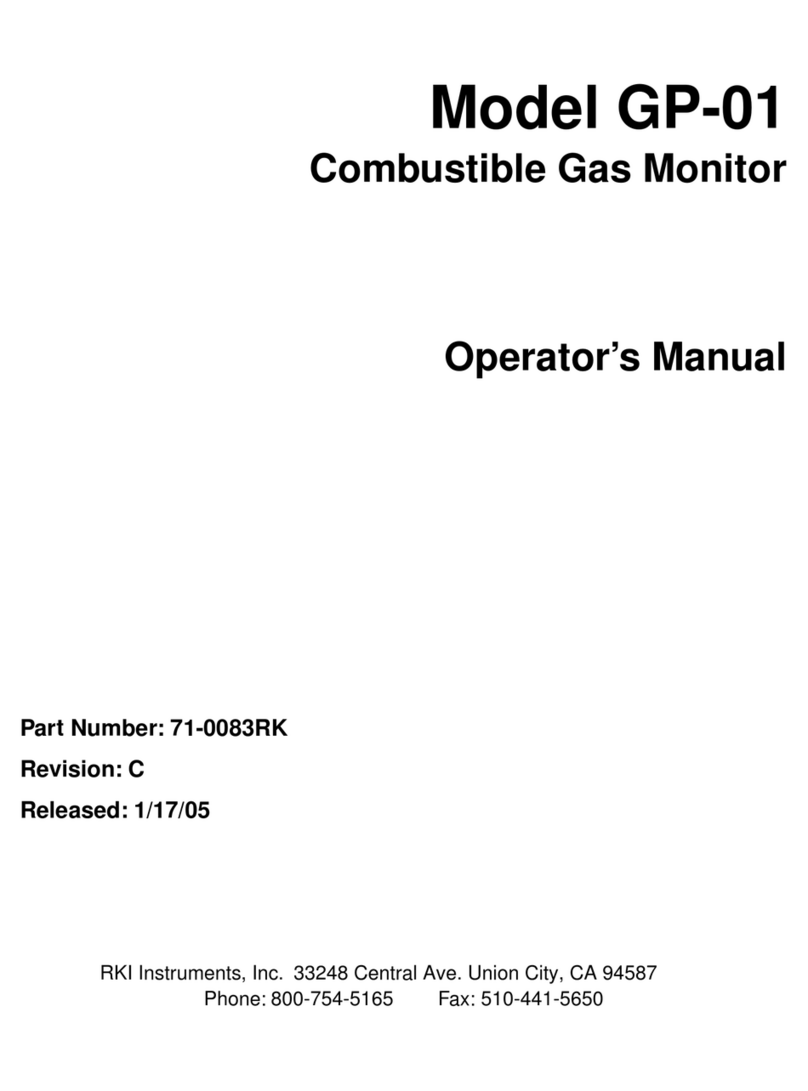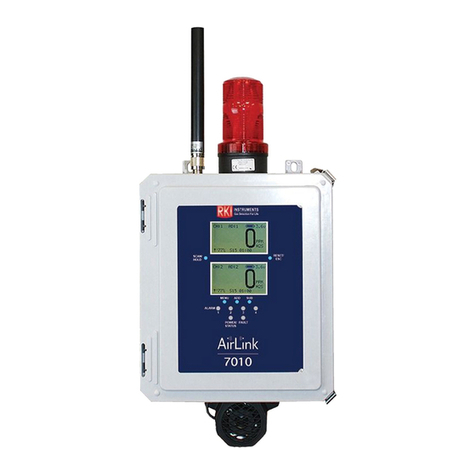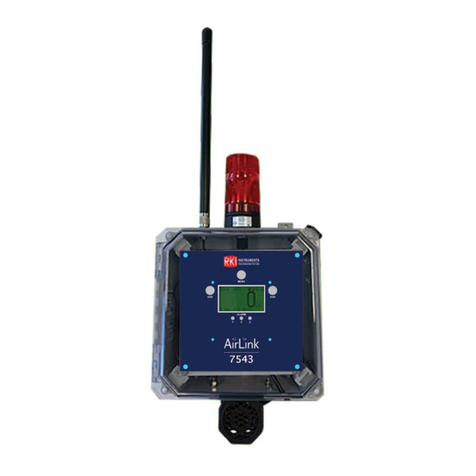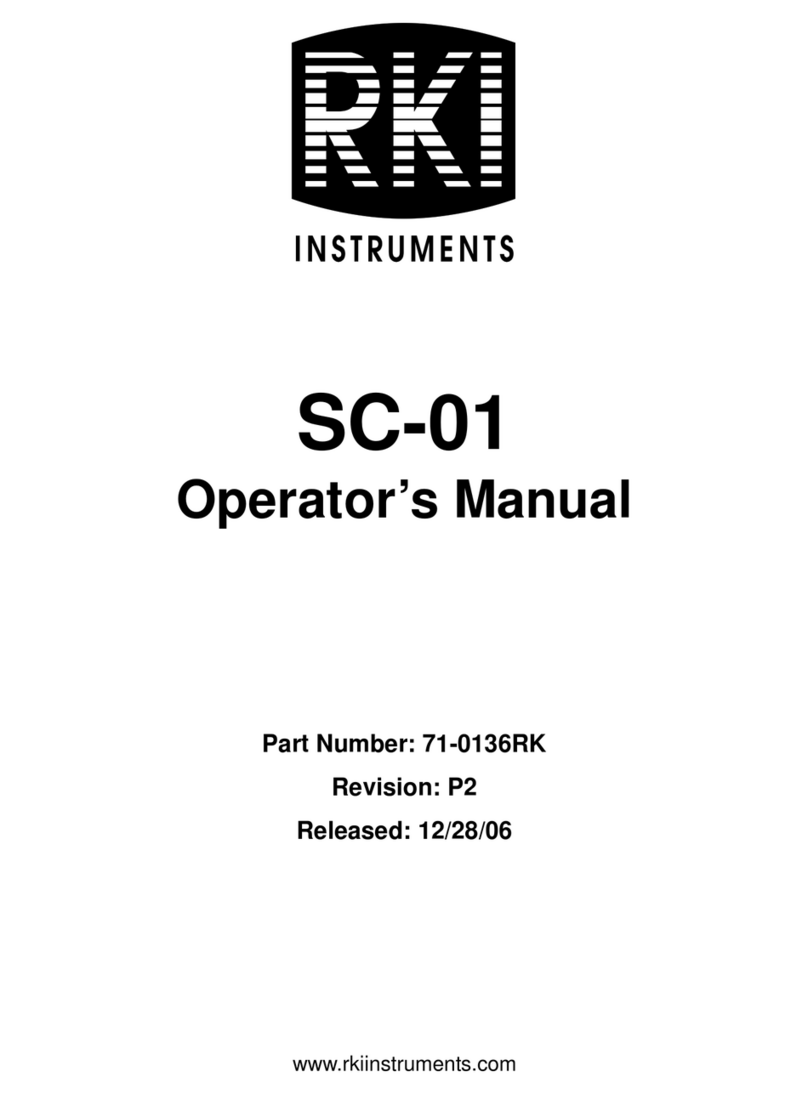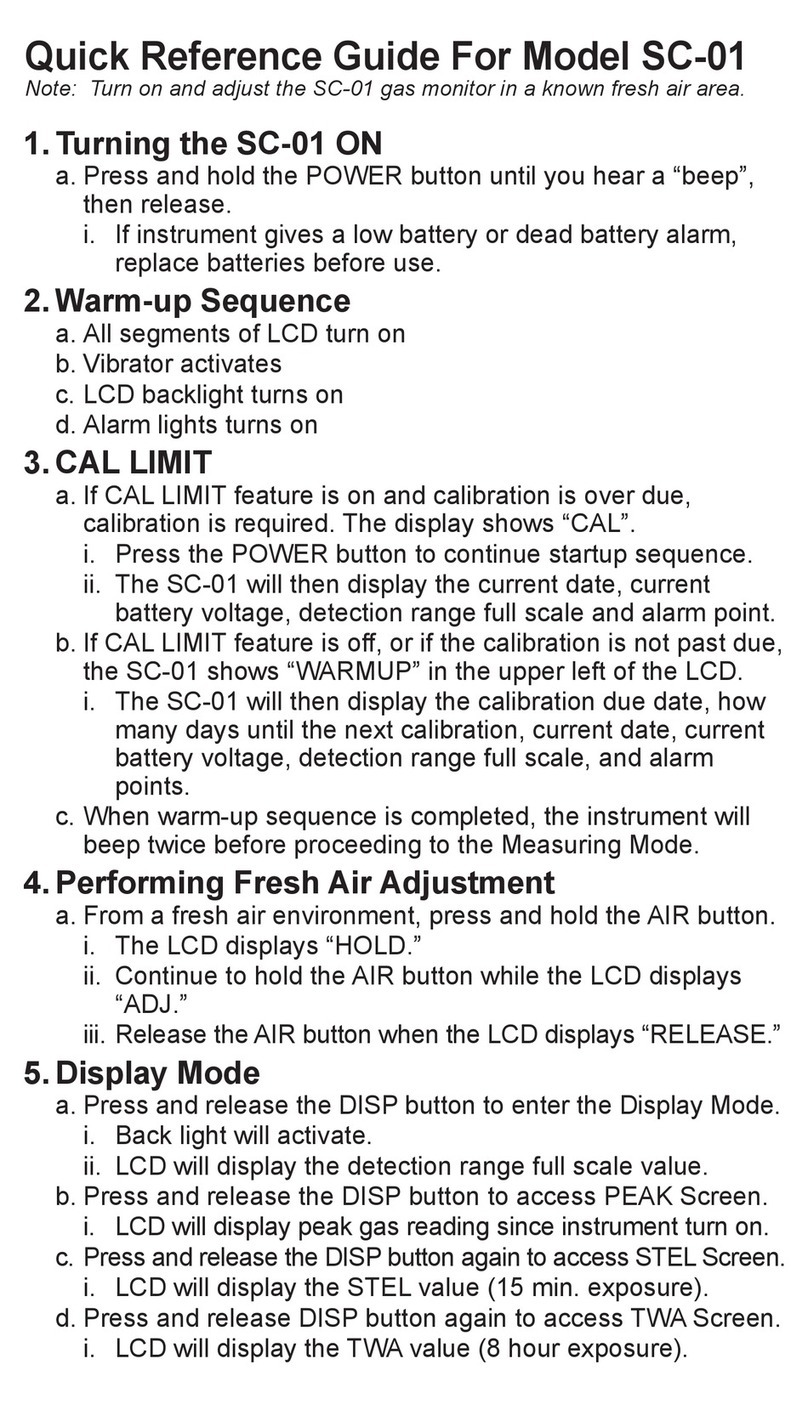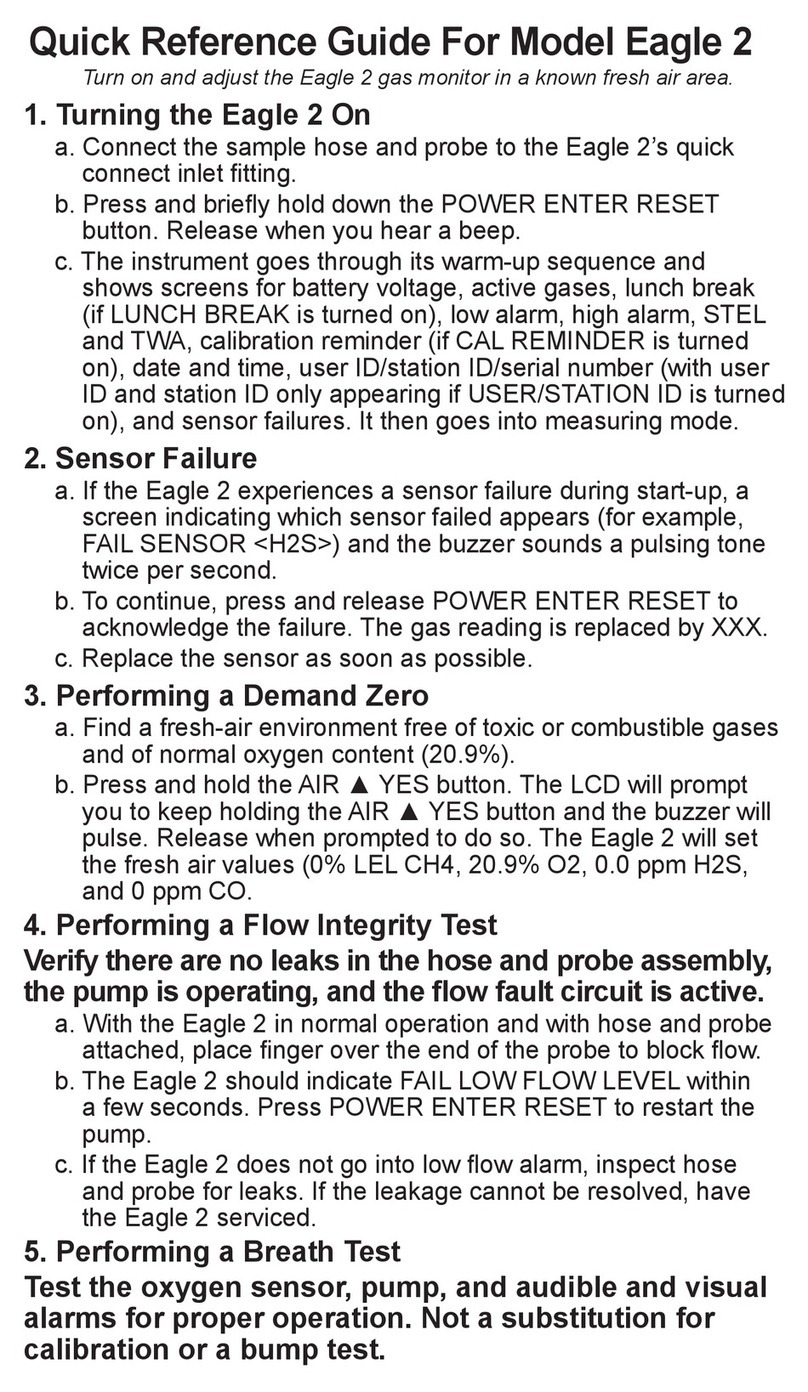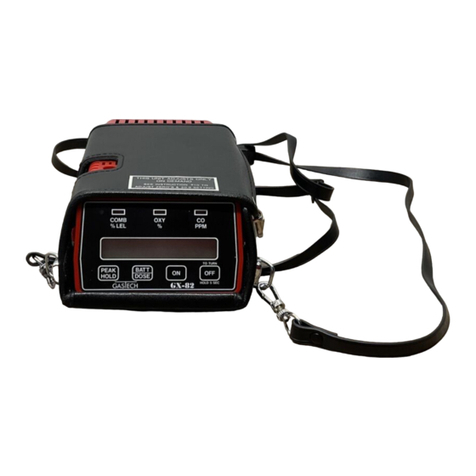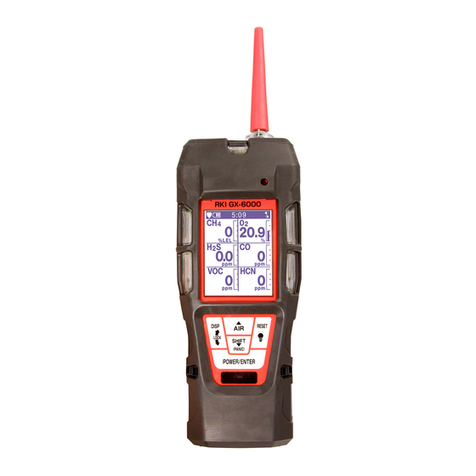
ii • Product Warranty
Product Warranty
RKI Instruments, Inc. warrants gas alarm equipment sold by us to be free
from defects in materials, workmanship, and performance for a period of
one year from date of shipment from RKI Instruments, Inc. Any parts found
defective within that period will be repaired or replaced, at our option, free
of charge. This warranty does not apply to those items, which by their
nature, are subject to deterioration or consumption in normal service, and
which must be cleaned, repaired, or replaced on a routine basis. Examples
of such items are as follows:
Warranty is voided by abuse including mechanical damage, alteration,
rough handling, or repair procedures not in accordance with the operator’s
manual. This warranty indicates the full extent of our liability, and we are not
responsible for removal or replacement costs, local repair costs,
transportation costs, or contingent expenses incurred without our prior
approval.
THIS WARRANTY IS EXPRESSLY IN LIEU OF ANY AND ALL OTHER
WARRANTIES AND REPRESENTATIONS, EXPRESSED OR IMPLIED,
AND ALL OTHER OBLIGATIONS OR LIABILITIES ON THE PART OF
RKI INSTRUMENTS, INC. INCLUDING BUT NOT LIMITED TO, THE
WARRANTY OF MERCHANTABILITY OR FITNESS FOR A
PARTICULAR PURPOSE. IN NO EVENT SHALL RKI INSTRUMENTS,
INC. BE LIABLE FOR INDIRECT, INCIDENTAL, OR CONSEQUENTIAL
LOSS OR DAMAGE OF ANY KIND CONNECTED WITH THE USE OF
ITS PRODUCTS OR FAILURE OF ITS PRODUCTS TO FUNCTION OR
OPERATE PROPERLY.
This warranty covers instruments and parts sold to users by authorized
distributors, dealers, and representatives as appointed by RKI Instruments,
Inc.
We do not assume indemnification for any accident or damage caused by
the operation of this gas monitor, and our warranty is limited to the
replacement of parts or our complete goods.
a) Absorbent cartridges d) Batteries
b) Pump diaphragms and valves e) Filter elements
c) Fuses
